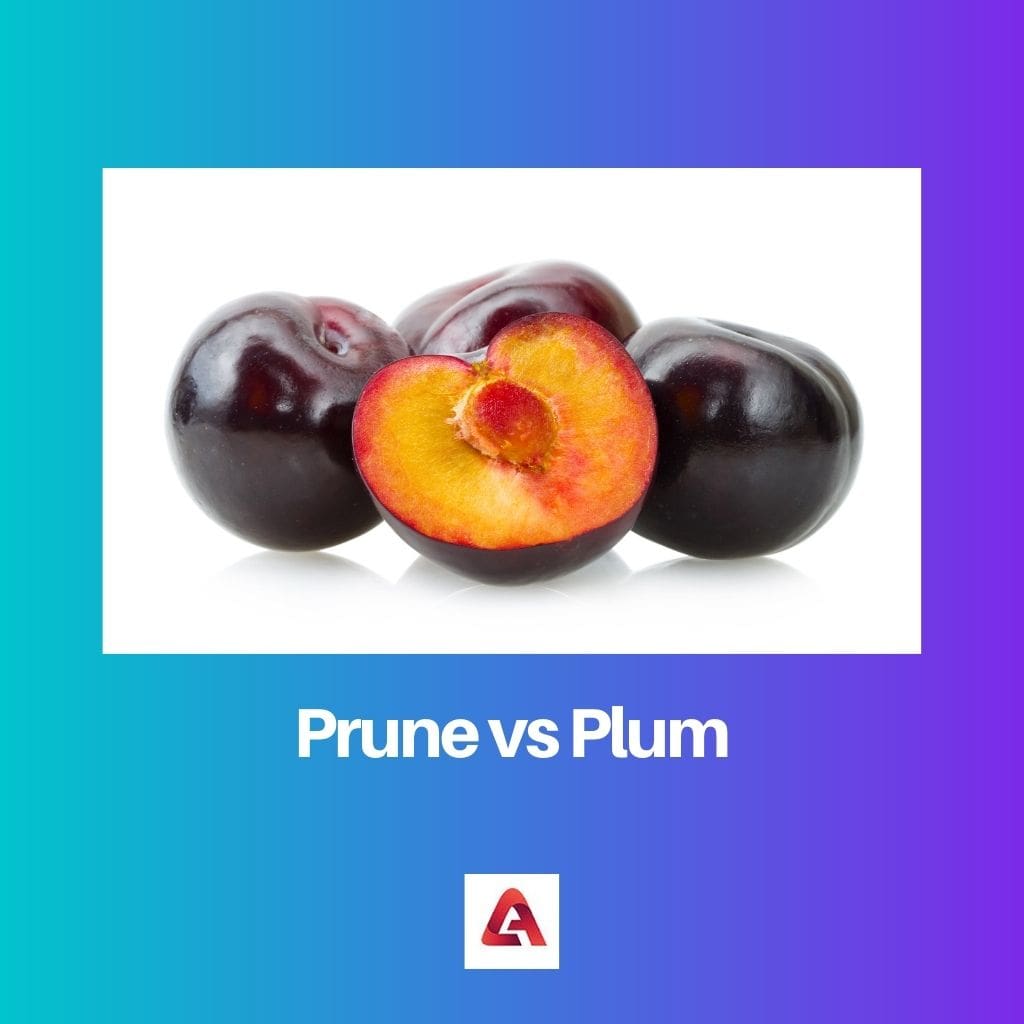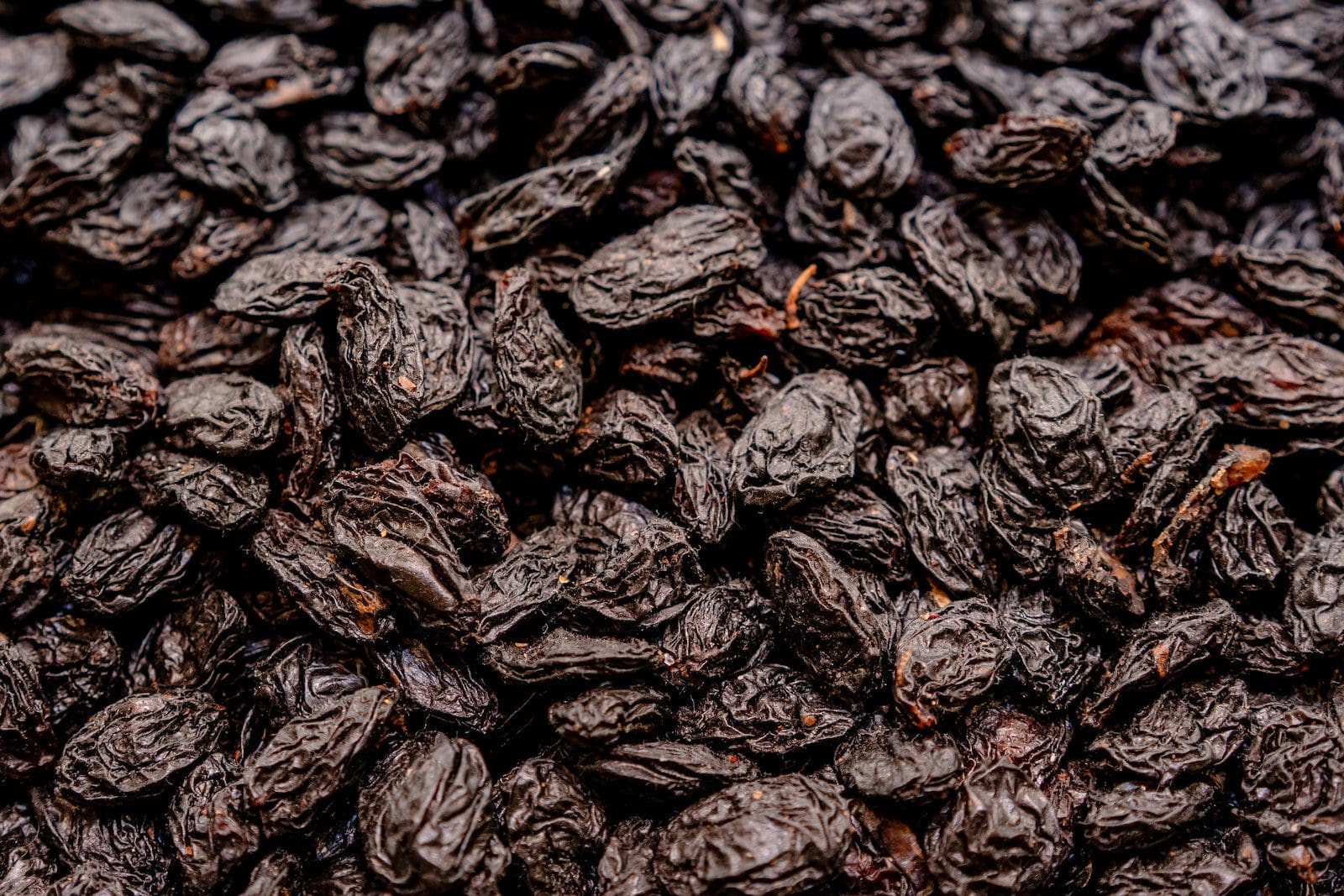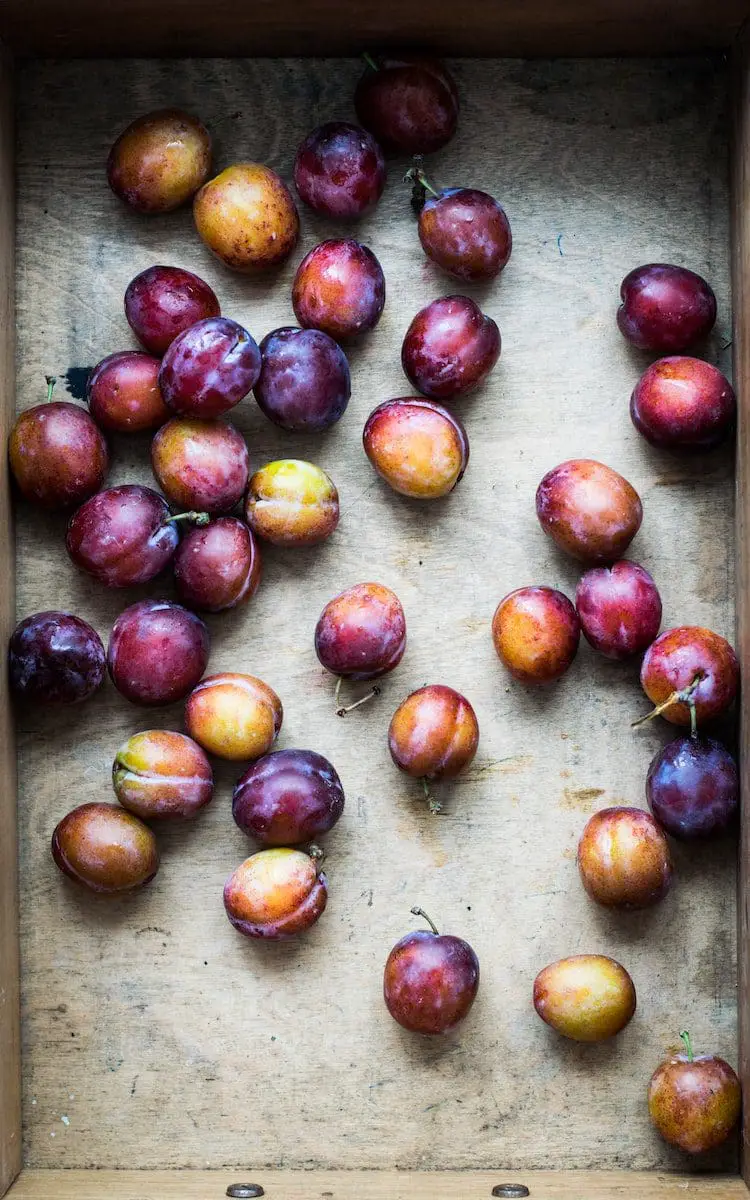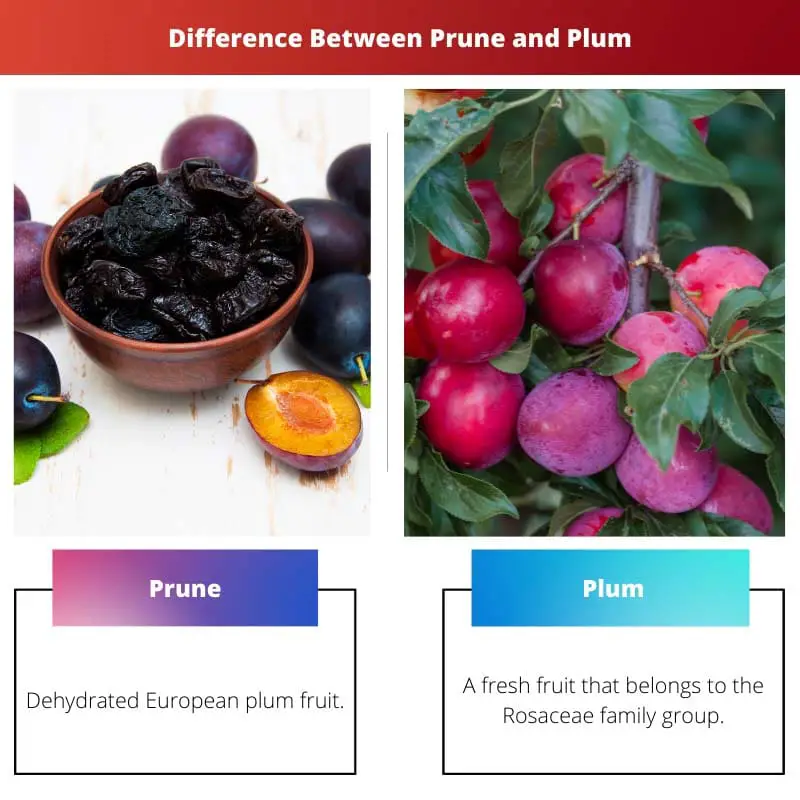As a dietary source, fruits contain many carbohydrates, vitamins, and minerals. Fruits are always good for health and provide energy to fight common diseases.
For this reason, humanity had domesticated fruit plants before grains. According to various historical findings, plum fruit was one of the first plants humans domesticated for harvesting.
Fruits also contain nutrient properties when dried. Many people interchanged the words prune and plum. These two words are not the same, and there are lots of differences between these two things.
Key Takeaways
- Prunes are dried plums, made from specific plum varieties with high sugar content and low moisture levels.
- Plums are a diverse group of stone fruits, enjoyed fresh or used in various culinary applications, with multiple varieties differing in size, color, and taste.
- Both prunes and plums offer nutritional benefits, but prunes are specifically known for their fiber content and potential digestive benefits.
Prune vs. Plum
The difference between Prune and Plum is that prune is a dehydrated European plum fruit that contains many vitamins B1, B2, B6, K, and dietary minerals and is used for sweet & savory dish preparation. In contrast, the plum is a fresh fruit belonging to the Rosaceae family group, enriched with vitamin C and used for raw consumption.

Comparison Table
| Parameter of Comparison | Prune | Plum |
|---|---|---|
| What is it | Dehydrated European plum fruit. | A fresh fruit that belongs to the Rosaceae family group. |
| Types | Dried prune plums, Dried Mirabelle, and Sour prunes. | Cherry plum, Japanese bush cherry, Italian plum, Chinese plum, American plum, Black plum, Flatwoods plum, etc. |
| Texture | Parched and rubbery. | Squashy and luscious. |
| Commonly used for | Sweet and savory dish preparation. | Raw consumption. |
| Calorie | 300 calories/100 gm. | 46 calories/100 gm. |
| Nutrients | A Large amount of vitamin B1, B2, B6, K, and dietary minerals. | Enriched with vitamin C. |
What is Prune?
The dehydrated fruit of Prunus domestica (European plum) is called prune. Unlike fresh plum fruit used for raw consumption, prunes come from freestone cultivars.
The benefit of freestone cultivars is that the seed can be easily removed before the dehydrating process begins. Currently, the United States is the largest producer of prunes.
Due to dehydration, the texture of the prune becomes chewy and sticky. Also, it tastes sweeter than fresh plum fruits. Prunes contain enormous health benefits. Around 7% of its weight contains dietary fiber.
For this reason, it provides laxative effects to the stomach. Every 100 grams of prune contains around 300 calories of energy.
Various scientific journals have established that prunes effectively help normal bowel function in those patients who suffer from constipation. Prunes also contain vitamins B1, B2, B6, K, and dietary minerals.
Commonly, three types of prunes are available in the market: dried prune plums, Dried Mirabelle, and Sour prunes. Most of the time, prunes are used in sweet and savory dish preparation.
The shelf life of prunes is long. With proper packaging, they last years. For this reason, they remain available in the market all the time.

What is Plum?
It is a fresh fruit that belongs to the Rosaceae family group. The shape of this fruit is a roundish oval shape, and the size of this fruit remains between 2 to 7 centimeters.
Generally, this group of fruits grows on medium-sized trees. Farmers trim these trees and keep their height between 5 to 6 meters long.
Many scientists believe it is one of the first fruit plants that the human species domesticated. However, the origin of this fruit plant is debatable in the scientific community.
Early species of this plant can be found in East European and Caucasian mountains, Iran, and the eastern part of Asia.
When a plum fruit matures, it develops a waxy coating around it. It is a natural defense mechanism against insects. The center of this fruit contains a heart pit, the fruit’s seed.
There is a soft edible fruit flesh surrounding this heart pit. A thin skin membrane surrounds the outer layer of the fruit. The texture of this fruit is soft and juicy, and sweet.
In the world, there are wide varieties of plum fruits available. Some common types are cherry plum, Japanese bush cherry, Italian plum, Chinese plum, American plum, Black plum, Flatwoods plum, etc.
Plum fruits are also a great source of nutrients. Most plum fruits contain around 87% water and 11% carbohydrates. The containment of fat and protein is less than 2%.
It is also enriched with vitamin C. 100 grams of plum fruits contain only 46 calories of energy.

Main Differences Between Prune and Plum
- On the one hand, prune is dehydrated European plum fruit. On the other hand, the plum is a fresh fruit that belongs to the Rosaceae family group.
- Generally, three types of prunes are available in the market: dried prune plums, dried Mirabelle, and sour prunes. However, wide varieties of plum fruit are available in the market; some are cherry plum, Japanese bush cherry, Italian plum, Chinese plum, American plum, Black plum, Flatwoods plum, etc.
- The texture of most prunes is parched and rubbery, while the surface of plum fruit is squashy and luscious.
- 100 grams of prune is enriched with 300 calorie energy. On the other hand, plum fruits contain only 46 calories per 100 grams.
- Plum fruits are enriched with vitamin C. On the other hand, prunes contain a large amount of vitamins B1, B2, B6, K, and dietary minerals.
- Prunes are commonly used for sweet and savory dish preparation. At the same time, plum fruit is for raw consumption.

- https://www.sid.ir/en/journal/ViewPaper.aspx?id=210509
- https://pubs.acs.org/doi/abs/10.1021/jf034858u

The author has done a commendable job of illustrating the nutritional value and differences between prunes and plums. It’s a comprehensive and enlightening read.
No doubt, the article is an excellent source of information for those interested in understanding the dietary benefits of prunes and plums in great detail.
Indeed, the article’s detailed analysis of prunes and plums is exceptionally informative, serving as an important guide for those focused on dietary health.
The article is a valuable source of information for those interested in dietary health and nutrition. A well-researched and enlightening piece.
I appreciate the detailed comparison and analysis of prunes and plums. It’s quite a comprehensive guide to understanding these fruits and their benefits.
I share your sentiment. The depth of information provided in this article is truly impressive, shedding light on the nutritional and health aspects of prunes and plums.
The thorough comparison of prunes and plums in this article is incredibly instructive and insightful for individuals seeking a deeper understanding of dietary fruits.
I completely agree. The article’s detailed examination of prunes and plums is invaluable, offering profound insights into their nutritional variances and health benefits.
A remarkably informative article that presents a well-researched and detailed analysis of prunes and plums, catering to readers seeking knowledge on dietary health.
The article provides a detailed explanation of the difference between prunes and plums, including their nutritional content and health benefits. Very informative and engaging read.
This article is a fantastic resource for individuals looking to make informed dietary choices. The breakdown of nutritional differences between prunes and plums is top-notch.
Absolutely, the article covers a wide range of factors concerning prunes and plums, enabling readers to make well-informed dietary decisions.
Precisely! The article provides an in-depth look into the nutritional components of prunes and plums, making it easier to understand their roles in a balanced diet.
This is some useful information for anyone interested in nutrition and dietary choices. Clearly explains the distinction between prunes and plums. Great article!
I have to agree, the article is very educational. It helps people understand the various benefits and uses of prunes and plums.
I found the article to be quite enlightening, especially when it comes to the nutritional value of prunes and plums. Great job on explaining the difference!
The article offers a comprehensive analysis of the nutritional and health aspects of prunes and plums. It’s a highly informative piece that provides valuable dietary insights.
I concur. The article is a fantastic resource, elucidating the nutritional differences and benefits of prunes and plums in a highly detailed and informative manner.
I found the article to be an exceptional source of information, effectively addressing the nutritional disparities and health aspects of prunes and plums.
The detailed comparison between prunes and plums is presented in a clear and engaging manner. It’s a testament to the author’s dedication to providing valuable dietary insights.
Absolutely, the article showcases the author’s commitment to delivering thorough and accurate information about prunes and plums in an engaging manner.
This article is a reliable source for anyone looking to expand their knowledge on dietary fruits. The distinction between prunes and plums is well articulated and informative.
I couldn’t agree more. The article’s detailed comparison of prunes and plums is incredibly valuable for individuals wanting to make informed dietary choices.
The article’s comparison between prunes and plums is a comprehensive and enlightening guide to understanding the nutritional and dietary significance of these fruits.
Absolutely! The article meticulously dissects the differences and nutritional factors associated with prunes and plums, providing essential dietary knowledge.